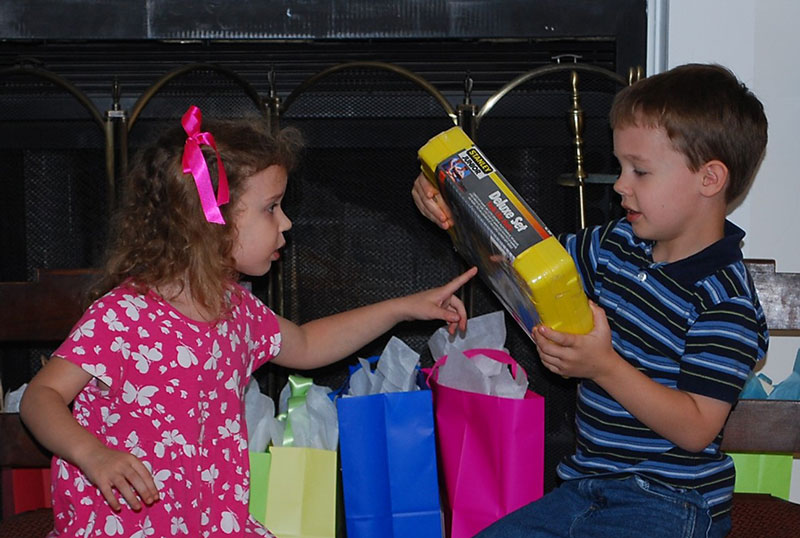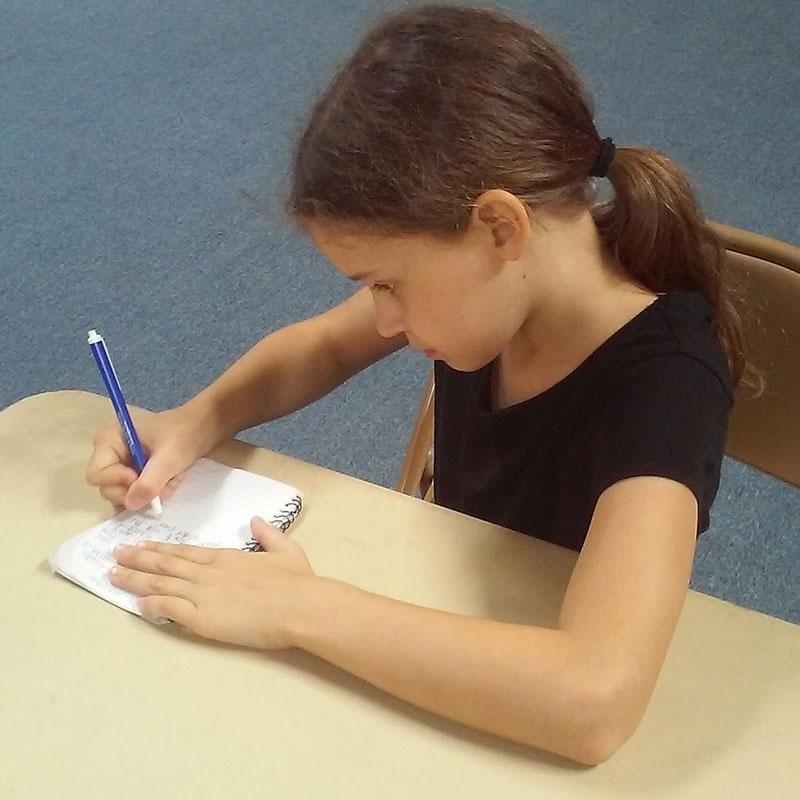
All the gifts are unwrapped. All of the new toys are (mostly) assimilated into the household storage system. And now it’s time to help your kids write thank-you notes to all of the relatives.
To be fair, Dear Abby actually says that thank-you notes are only actually required when you receive a gift by mail and are not with the person who sent the gift to thank them personally upon opening it. However, if Grandma is expecting a note, I doubt Dear Abby can convince her otherwise.
And, of course, it’s not a bad thing to train children in a habit of gratitude. In our culture, the thank-you note is one way that’s often done. Here are some tips to make the process smoother.
Take it Slow
Writing a thank-you note is a big task. Don’t try to have a marathon note-writing session with your kids. Stretch it out. One a day during morning time, perhaps.
If you must make a list of all the notes to be written, keep it to yourself. Nothing squelches the desire to write like knowing this is only the first of twenty-seven that need to be done.
Start with the people on the list whom you’d most like your child to write to personally. That way if the project loses steam and you need to pick up the task, those who will most appreciate (expect?) a note from your child will be blessed with it.
Write What You Know
Adult professional writers stand by this mantra: write what you know. If you want your kids to have ideas to draw from when writing notes, give them plenty of experience with the topic about which they are writing.
Let them play with their toys. Pick an occasion to wear those new rainbow-striped tights. Show them pictures from the gathering when they opened the gift or pictures of the gift giver to whom they are writing. Get those thought-wheels turning!
Discussion is the Predecessor to Writing
Help your children translate those experiences into words by simply engaging them in conversation about their gift during or shortly after their time using the gift.
- Were you surprised when you got this?
- How do you think [gift giver] knew you’d like this?
- Does it fit with other things you’ve already got?
- What do you most look forward to doing with this?
If you need to, jot some notes for yourself about what they say. Then, as they begin the writing process, you can remind them of some of their own thoughts to include.
Practice What You Preach
Here’s the test, Mom. If writing thank-you notes is really a thing – if it’s actually something important in life – then you should be doing it, too. The ideal set-up would be for you to write a note beside your child.
Maybe even share what you’re writing in order to model ideas and format.
“I wanted to tell Grandma how much I love these slippers because now my feet don’t have to be cold on the floor in the mornings!”
“It was really sweet of Aunt Carrie to notice that I was almost out of my favorite tea and to include some in my gift!”
If your kids need more assistance and you can’t write along-side them, at least show them your notes. Do you use special stationary? Or maybe they’d get a kick out of seeing you sign your “real name” in cursive.
Keep the Main Thing the Main Thing
I know, as a homeschool mom, that it’s tempting to make a school lesson out of every life event. And it’s true that letter writing is an important skill. It totally counts as your writing project for January.
But remember that the goal here is practicing and expressing gratitude. Which is more important: Grandma knowing her gift is loved, or Jimmy knowing how to spell sweater by “sounding it out”?
Don’t make this such a burden that it’s hard for your kids to actually feel grateful as they write. Make them a word bank on a piece of paper or the chalkboard. Be willing to take dictation if needed.
Help them to formulate a sentence out of their own verbal comments. It isn’t cheating and it doesn’t make their thankfulness any less genuine.
Set up the envelopes ahead of time. Or, better yet, include all of the notes from each child to one relative in the same envelope. An older child can do all of the addressing and let the littles focus on their notes.
Also, remember that your first priority is to your relationship with your child. Don’t cause a rift between the two of you just so your mother-in-law will be impressed with how well you’ve trained him in penmanship.
Want to try something new this year? Hope on over to Homeschooling without Training Wheels and download this free set of matching Thank-You Note templates!
- The Ultimate Guide to Relaxed Poetry in Your Morning Time - April 27, 2020
- Holiday Time when Your Family is Anti-Homeschool - November 15, 2018
- When Skill Learning Gets Messy - October 11, 2018



